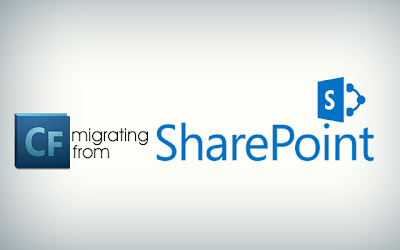Being
a ColdFusion developer, chances of not knowing much about SharePoint
certainly stands high. Therefore, before you take the plunge to
migrate from ColdFusion to Microsoft SharePoint, you must consider
developing some basic knowledge of working amid the particular
environment.
What
is SharePoint?
Well,
in simple terms, it is referred to an application of content
management system that allows an access of data stored in MSSQL
database. The incorporated search services of SharePoint keep it
apart from just file storage in common folders and add the context of
team collaboration and data file management that are usually
generated by the Microsoft Office Suite.
So,
what are the aspects that you must primarily keep in mind to ensure a
successful migration of ColdFusion to SharePoint? Well, here is a
look at the aspects that prominently focuses on the task of
understanding the content management system application:
Exploring
the site hierarchy of SharePoint and roles that are permission based
The
application usually exists in the form of a structured site grouping
referred to as site collection. In this respect, it is to be made
clear that site permissions are usually linked to the Active
Directory login of a user. All permissions to site collection
typically begin at the top level and spread downwards to the created
sites thereby, acceding to the permission of the parent level.
Here
is a quick look at some of the principle permission levels related to
sharepoint
application development
:
- Read – users can only have a view of the data along with the sites
- Contribute – Users can view, add, delete, and update the data along with the sites
- Design – Users can views, update, delete, add, approve, and customize the data as well as the sites
- Complete control – Users can exert complete control over the data alongside the sites.
Knowing
Lists of SharePoint: Views and Items
The
SharePoint List is often recognized as the foundation of a site
related to the application. In simple terms, a List is nothing, but
similar to a database table. The content management system
application comes with a several template concerning a List i.e. task
list, contacts, calendar, etc. Each of these features their own
default columns; however, the application can be customized catering
to the exact needs as well as interests. For instance, you can always
go ahead and add a column to the particular list like customer ID,
document library, etc. You can also consider the idea of creating
custom lists featuring no pre-incorporated or defined columns and
save them as templates, if you wish.
Usually,
the List consists of four default pages that are generated following
the creation: a look
- NewForm.aspx – allows the users to add items maintaining a pre-generated approach to the list.
- DispForm.aspx – allows the users to review an item in read-only form
- Edit Form.aspx – allows the users to undertake editing of a integrated item with proper permissions
- AllItems.aspx – allows a display of all list items maintaining a view that is non-filtered
Adding
to all these is the final feature of the List that is Stored Views.
This actually refers to filtered displays of Items present in the
list catering to the chosen criteria of a user.
SharePoint
Pages and Web Parts
When
it comes to displaying a web page in SharePoint, it is to be noted
that a usual page is likely to consist of pre-defined aspects and Web
Part Zones that allows an addition of a Web Part. What is a Web Part?
Well, a code snippet that exhibits the contained data of SharePoint
in a specific layout. For instance, you can have a calendar Web Part
that specifically exhibits Items from a Calendar List of the content
management system application, offering you the options of exhibiting
contents as a list of events or in the form of calendars offering
monthly, weekly, and daily views. Building a page featuring multiple
Web Parts allow you to put forward a design enabling a view in the
form of dashboard quite quickly.
Once,
you get all the necessary permissions within the environment of
SharePoint, you can easily go ahead and experiment with the
migration. Being a ColdFusion developer, you now have the choice of
creating ColdFusion applications within SharePoint in a way like
never before.
We
provide sharepoint
bespoke development
services. If you would like to know what makes us expert sharepoint
developers,
please contact us at Mindfire Solutions.
